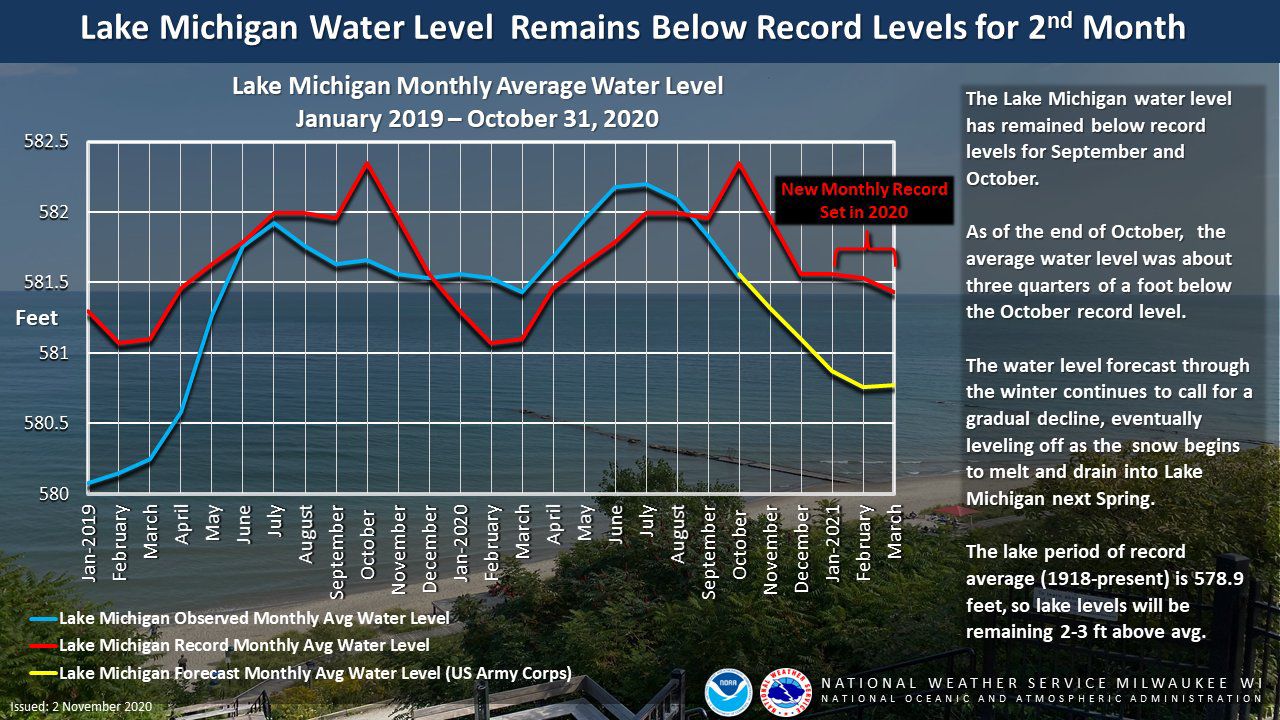After eight consecutive months of record high water levels on Lake Michigan, we are finally starting to see a decline.
For the second month in a row, the water level on Lake Michigan has fallen below record levels. After being at record high levels since January of this year, the water levels have finally started to decline.
A seasonal drop is normal around this time of year, with water levels typically peaking in July and falling until about March. Fewer instances of heavy rainfall and the arrival of cooler air, which increases the amount of evaporation on the lake, contributes to the decreasing water levels.
Although the water level is falling, levels are still running much higher than average. The average lake level is 578.9 feet, but the current forecast has lake levels around two to three feet higher than average for the foreseeable future.

The record high levels in recent months have contributed to significant erosion and more instances of flooding up and down Wisconsin’s lakeshore. With the water levels forecast to continue their gradual decline, the hope is that these occurrences decrease as we gear up for our snowy season across Wisconsin.









